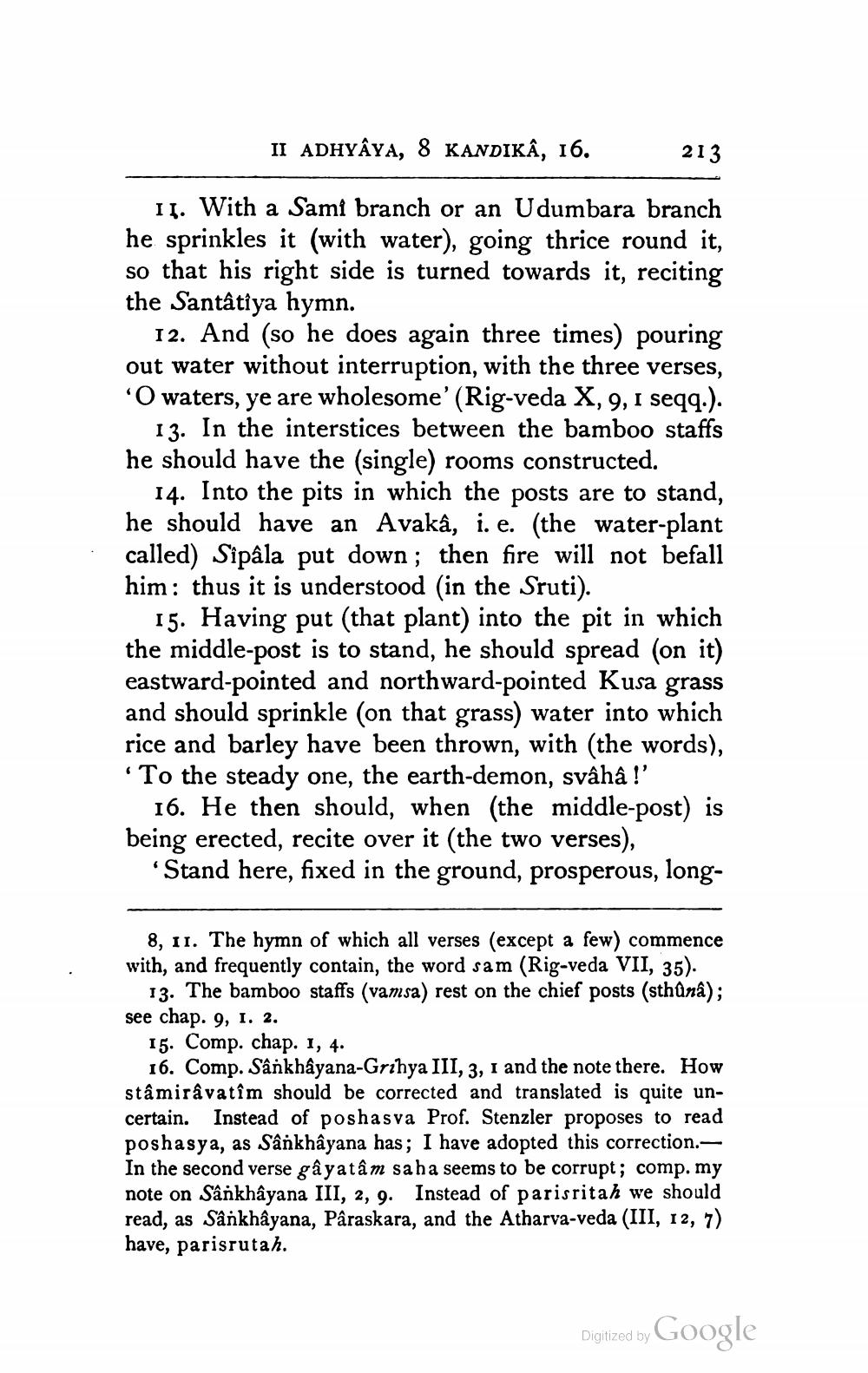________________
II ADHYAYA, 8 KANDIKÂ, 16.
213
11. With a Sami branch or an Udumbara branch he sprinkles it (with water), going thrice round it, so that his right side is turned towards it, reciting the Santâtîya hymn.
12. And (so he does again three times) pouring out water without interruption, with the three verses, "O waters, ye are wholesome' (Rig-veda X, 9, 1 seqq.).
13. In the interstices between the bamboo staffs he should have the (single) rooms constructed.
14. Into the pits in which the posts are to stand, he should have an Avakâ, i. e. (the water-plant called) Sipâla put down; then fire will not befall him: thus it is understood in the Sruti).
15. Having put (that plant) into the pit in which the middle-post is to stand, he should spread (on it) eastward-pointed and northward-pointed Kusa grass and should sprinkle (on that grass) water into which rice and barley have been thrown, with the words), "To the steady one, the earth-demon, svâhâ !'
16. He then should, when the middle-post) is being erected, recite over it (the two verses),
'Stand here, fixed in the ground, prosperous, long
8,11. The hymn of which all verses (except a few) commence with, and frequently contain, the word sam (Rig-veda VII, 35).
13. The bamboo staffs (vamsa) rest on the chief posts (sthûnâ); see chap. 9, 1. 2.
15. Comp. chap. 1, 4.
16. Comp. Sânkhâyana-Grihya III, 3, 1 and the note there. How stâmiravatim should be corrected and translated is quite uncertain. Instead of poshasva Prof. Stenzler proposes to read poshasya, as Sânkhâyana has; I have adopted this correction.In the second verse gâyatâm saha seems to be corrupt; comp.my note on Sankhayana III, 2, 9. Instead of parisritah we should read, as Sânkhâyana, Paraskara, and the Atharva-veda (III, 12, 7) have, parisrutah.
Digitized by Google




